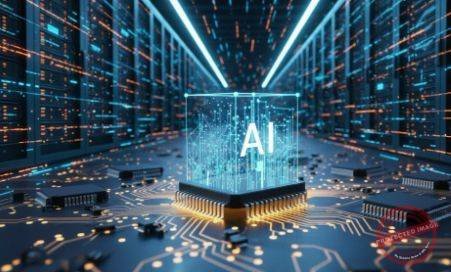Why specialized accelerators are redefining performance and efficiency.
Why General-Purpose Isn’t Enough Anymore
As models scale into the trillions of parameters, general-purpose CPUs and even traditional GPUs struggle to deliver enough compute per watt. That’s where specialized accelerators—TPUs, ASICs and NPUs—come in, each tuned to common AI patterns such as matrix multiplies and convolutions. Arbisoft
These chips strip away unneeded features, add custom data paths, and reorganize memory hierarchies to maximize throughput per watt on AI workloads rather than generic graphics or scalar code. InTechHouse
Cloud TPUs: Google’s Matrix Machines
Google’s Cloud TPU line is a flagship example of hardware–software co-design. TPU v5p more than doubles the floating-point performance of TPU v4 and triples the available high-bandwidth memory—making it a workhorse for large-scale training on Google Cloud’s AI Hypercomputer platform. Google Cloud+2Google Cloud Documentation
Each TPU core packs dedicated matrix units, vector units and a scalar engine, and thousands of chips can be stitched together in “cubes” that behave as a single giant accelerator slice for distributed training. Google Cloud Documentation+2Google Cloud Documentation
ASICs and NPUs: Performance per Watt Above All
Application-specific integrated circuits (ASICs) built for AI skip flexibility in favor of raw efficiency. Industry guides point out that ASICs can offer the highest performance-per-watt (TOPS/W) of any approach—but with multi-million-dollar upfront costs and year-plus design cycles. InTechHouse
Neural processing units (NPUs) bring similar ideas into consumer and edge devices. Apple’s 16-core Neural Engine in the iPhone 16 family is rated around 35 TOPS of on-device AI performance while increasing memory bandwidth and energy efficiency over the prior generation. CRN
Neuromorphic Chips: Brain-Inspired Outliers
At the far frontier are neuromorphic processors—chips that compute using spikes and events instead of traditional clocked logic. IBM’s TrueNorth and Intel’s Loihi 2 represent research-grade platforms that mimic aspects of biological neurons to achieve ultra-low-power pattern recognition. open-neuromorphic.org+2Intel
BrainChip’s Akida neuromorphic NPU pushes this thinking into commercial edge devices, using sparsity and event-based processing so that “neurons” fire only when meaningful signals appear, dramatically cutting power for always-on sensing applications. BrainChip+2open-neuromorphic.org
Closing Thoughts and Looking Forward
Specialized AI chips are fragmenting the compute landscape:
-
Cloud-scale TPUs and GPU-like accelerators for the biggest training runs.
-
Efficient NPUs and ASICs embedded in phones, PCs and appliances.
-
Experimental neuromorphic and quantum accelerators for future workloads.
For architects, the challenge is managing this diversity—choosing the right accelerator mix for each workload while keeping software portability under control. For buyers, it’s critical to look beyond raw TOPS numbers and understand what each class of chip is actually optimized to do.
Reference Sites
-
“TPU v5p Architecture” – Google Cloud Docs – https://cloud.google.com/tpu/docs/v5p
-
“Introducing Cloud TPU v5p and AI Hypercomputer” – Google Cloud Blog – https://cloud.google.com/blog/products/ai-machine-learning/introducing-cloud-tpu-v5p-and-ai-hypercomputer
-
“AI Hardware-Software Co-Design: Optimizing Performance Together” – Arbisoft Blog – https://arbisoft.com/blogs/ai-hardware-software-co-design-optimizing-performance-together
-
“Neuromorphic Computing” – IBM Think – https://www.ibm.com/think/topics/neuromorphic-computing
-
“BrainChip Technology – Akida Neuromorphic Processor” – BrainChip – https://brainchip.com/technology/
Author: Serge Boudreaux – AI Hardware Technologies, Montreal, Quebec
Co-Editor: Peter Jonathan Wilcheck – Miami, Florida
Post Disclaimer
The information provided in our posts or blogs are for educational and informative purposes only. We do not guarantee the accuracy, completeness or suitability of the information. We do not provide financial or investment advice. Readers should always seek professional advice before making any financial or investment decisions based on the information provided in our content. We will not be held responsible for any losses, damages or consequences that may arise from relying on the information provided in our content.



